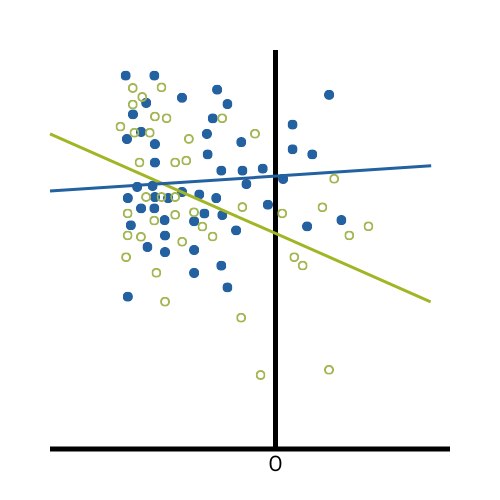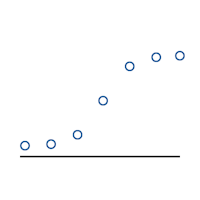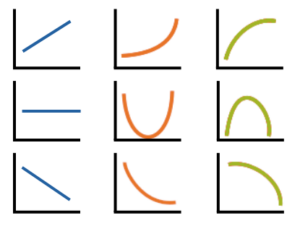Previous Posts
Binary logistic regression is one of the most useful regression models. It allows you to predict, classify, or understand explanatory relationships between a set of predictors and a binary outcome.
You might be surprised to hear that not only can linear regression fit lines between a response variable Y and one or more predictor variables, X, it can fit curves too. There are many ways to do this, but the simplest is by adding a polynomial term. So what is a polynomial term and how […]
Have you ever wondered whether you should report separate means for different groups or a pooled mean from the entire sample? This is a common scenario that comes up, for instance in deciding whether to separate by sex, region, observed treatment, et cetera.
Item Response Theory (IRT) refers to a family of statistical models for evaluating the design and scoring of psychometric tests, assessments and surveys. It is used on assessments in psychology, psychometrics, education, health studies, marketing, economics and social sciences — assessments that involve categorical items (e.g., Likert items).
How do you know when to use a time series and when to use a linear mixed model for longitudinal data? What’s the difference between repeated measures data and longitudinal?
No matter what statistical model you’re running, you need to go through the same steps. The order and the specifics of how you do each step will differ depending on the data and the type of model you use. These steps are in 4 phases. Most people think of only the third as modeling. But […]
If you’ve tried coding in Stata, you may have found it strange. The syntax rules are straightforward, but different from what I’d expect. I had experience coding in Java and R before I ever used Stata. Because of this, I expected commands to be followed by parentheses, and for this to make it easy to […]
When analyzing longitudinal data, do you use regression or structural equation based approaches? There are many types of longitudinal data and different approaches to analyzing them. Two popular approaches are a regression based approach and a structural equation modeling based approach.
Ever consider skipping the important step of cleaning your data? It’s tempting but not a good idea. Why? It’s a bit like baking. I like to bake. There’s nothing nicer than a rainy Sunday with no plans, and a pantry full of supplies. I have done my shopping, and now it’s time to make the […]
Structural Equation Modeling (SEM) is a popular method to test hypothetical relationships between constructs in the social sciences. These constructs may be unobserved (a.k.a., “latent”) or observed (a.k.a., “manifest”). In this webinar, guest instructor Manolo Romero Escobar will describe the different types of SEM: confirmatory factor analysis, path analysis for manifest and latent variables, and latent growth modeling (i.e., the application of SEM on longitudinal data).










 stat skill-building compass
stat skill-building compass